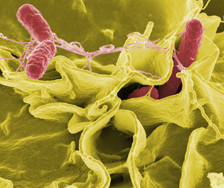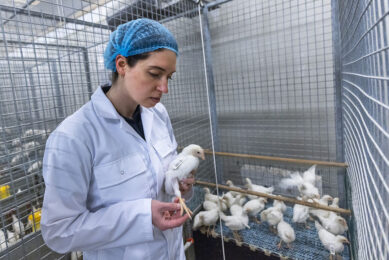EU Salmonella cases fall as Campylobacter rises

Salmonella cases in humans fell by almost 9% in 2010, marking a decrease for the sixth consecutive year. Salmonella prevalence in poultry is also clearly declining at the EU level, a recent report states.
Campylobacteriosis remains the most reported zoonotic infection in humans since 2005 and the number of cases has been increasing over the last five years, according to the annual report on zoonoses and food-borne outbreaks in the European Union for 2010 published by the European Food Safety Authority (EFSA) and the European Centre for Disease Prevention and Control (ECDC).
This report supports the European Commission and EU Member States in their consideration of possible measures to protect consumers from risks related to zoonoses.
Reduction of Salmonella
“The positive progress in the reduction of Salmonella cases in humans and poultry is continuing and the majority of Member States met the targets set for the reduction of Salmonella in different poultry flocks in 2010,” said Claudia Heppner, EFSA’s Acting Director of Risk Assessment and Scientific Assistance.
According to the report, the likely main reasons for the decrease in human salmonellosis cases are the successful EU Salmonella control programmes for reducing the prevalence of the bacteria in poultry populations, particularly in laying hens. Salmonella, which usually causes fever, diarrhoea and abdominal cramps, accounted for 99,020 reported human cases in 2010 compared to 108,618 in 2009. Salmonella was found most often in chicken and turkey meat.
Johan Giesecke, Chief Scientist at ECDC, explained: “The increasing trends in human cases of Campylobacter highlight the need of further joint efforts. For this, EFSA and ECDC will continue to strengthen their links with all important partners and foster collaboration in order to decrease the occurrence of these diseases in the EU.”
Raw poultry meat
In 2010, a total of 212,064 Campylobacter cases in humans were reported, an increase for the fifth consecutive year with 7% more cases compared to 2009. In foodstuffs, Campylobacter, which can cause diarrhoea and fever, was mostly found in raw poultry meat. In order to combat Campylobacter, the European Commission is currently carrying out a cost-benefit analysis of the control measures for the bacteria at different stages of the food chain. EFSA has supported this work by among others analysing an EU-wide baseline survey on the prevalence of Campylobacter in chicken and providing scientific advice on possible reduction measures.
The full version of the report with data by country and annexes is available on EFSA and ECDC websites.













